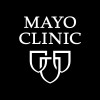
Early Sleep Apnea Treatment in Stroke
Sleep ApneaObstructive3 moreInvestigating the interrelation of stroke and sleep-disordered breathing (SDB) is of major importance. First because of the high occurrence rate of stroke and the fact that it is a frequent cause of long-term disability in adulthood. Second because SDB (obstructive, central and mixed forms) affects more than 50% of stroke survivors and has a detrimental effect on clinical stroke outcome. Third, spontaneous and learning-dependent sleep-associated neuroplasticity may be affected by SDB following stroke worsening stroke rehabilitation. Therefore, it is crucial to investigate whether early treatment of SDB with Adaptive Servo-Ventilation (ASV), the treatment device of choice to treat obstructive, central and mixed forms of SDB, has a beneficial effect on the evolution of the lesion volume and on clinical stroke outcome. To this end, the investigators recruit and prospectively follow 3 groups of patients with ischemic stroke over 1 year. During the first night after hospital admission due to acute stroke, nocturnal breathing is assessed by means of a respiratory polygraphy. Patients with significant sleep disordered breathing, defined as an Apnea-Hypopnea-Index (AHI) > 20/h, are randomized to ASV treatment or no treatment (sSDB ASV+ or sSDB ASV-). ASV treatment starts the second night following hospital admission and ends 90 days later. Stroke patients without SDB (AHI < 5 / h) serve as a control group (no SDB) to observe the evolution of the lesion volume and stroke outcome without the additional burden of SDB. Lesion volume one day after hospital admission due to acute stroke (after potential lysis therapy) measured by Diffusion Weighted Imaging will be subtracted from lesion volume measured by T2-weighted volumetry assessed 90(+/-7) days following stroke and compared between patients with and without ASV treatment (sSDB ASV+ and sSDB ASV-) as well as patients without SDB (no SDB). Short- and long-term clinical stroke outcomes are assessed by clinical scales and questionnaires 4 to 7 days, 3 months and 1 year following stroke. Cognitive outcome is assessed during hospitalization (within the first week following stroke) and after the treatment period of 90 days by neuropsychological tests assessing attention and memory. In addition, baseline assessment of physiological parameters such as blood pressure and endothelial function/arterial stiffness are assessed during the first weeks following stroke and at the end of the treatment period, i.e. approximately 90 days following stroke.

Long-term Results of Tonsillectomy in the Treatment of Obstructive Sleep Apnea in Adults
Obstructive Sleep ApneaTonsillar Hypertrophy1 moreLong-term results of tonsillectomy in the treatment of obstructive sleep apnea in adults

The PREDICTOR Study: Assessing Diagnostic Predictors of Airway Collapse in Patients With Obstructive...
Sleep ApneaObstructiveThis study is an exploratory, multicenter study of up to 300 subjects diagnosed with obstructive sleep apnea who are being evaluated for airway surgery. Subjects will undergo standard evaluation for airway surgery as part of standard of care. In addition to the standard airway assessment, a simple, non-invasive measurement of the width of the inside of each subjects mouth will be performed. This measurement takes 2-3 minutes to perform.

Non-contact Sleep Apnea Identification in Neurological Rehabilitation
Sleep ApneaStrokeTo improve the quality of medical care in the group of poststroke patients, we are planning to examine neurological patients in a rehabilitation clinic simultaneously with a non-contact method (Sleepiz One) and a standard diagnostic polygraphy measurement. This easy and comfortable pre-screening (Sleepiz One) should reduce the barrier for ward physicians to request a sleep study. The method could help to overcome the bottleneck of resource-intense procedures. It is simple to carry out and does not disturb the sleep of the patients. The scoring is done according to the AASM Manual Version 2.6. Patients with a confirmed diagnosis will be informed about therapy options by a sleep physician and receive a recommendation for further therapy in the discharge letter from the rehabilitation clinic. The goal of the study is then to evaluate if a non-contact method, the Sleepiz One, presents an opportunity for a fast and easy pre-screening during rehabilitation. Therefore, the precision of binary classification of subjects based on their sleep apnea severity (AHI >= 15) made by Sleepiz One will be compared to PG data manually scored by expert sleep scorers.

Prevention of Sleep Apnea After General Anaesthesia With a MAD
Peri-operative MedicineSleep ApneaSleep apneic episodes increase after general anaesthesia up to the third postoperative night. A mandibular advancement device, called MAD, is a small device that is inserted in the patient's mouth during the night and allows the advancement of the mandible, preventing sleep apneic episodes. The objective of this randomized controlled trial is to determine whether a MAD reduces the impact of general anaesthesia on the increase of the sleep apneic episodes in the postoperative period. All patients will have their sleep-related respiratory data measured using a portable respiratory polygraphy recorder (ResMed Embletta® system). This portable recorder allows a non-invasive recording of nasal airflow through a nasal cannula, oxygen saturation (SpO2) via finger pulse oximetry, respiratory efforts through thoracic and abdominal belts, and body position.

Statins and CPAP in Adipose Tissue of OSA
Sleep ApneaObstructiveThis study is aimed at examining the alterations in adipose tissue in obstructive sleep apnea (OSA) patients in response to treatment with atorvastatin in continuation with standard treatment with continuous positive airway pressure (CPAP).

Evidence-based Pediatric Obstructive Sleep Apnea Detection
Obstructive Sleep Apnea of ChildThe goal of this clinical trial is to test whether a health communication message (infographic about obstructive sleep apnea; OSA) seen by parents whose children have OSA symptoms will be helpful in identifying children with OSA. The main questions it aims to answer are: Will parents who see this health communication message be more likely to talk to their child's health care provider about OSA? Does the use of a health communication message help health care systems identify more children with OSA? Participants are parents and children who are patients in a specific health care center. As part of clinical care, parents will answer screening questions about OSA symptoms (e.g., snoring, sleepiness) before their child's primary care visit. If their child has OSA symptoms, the health care provider will receive an alert suggesting further evaluation and possible referral for a sleep study or to a specialist. In this study, children with OSA symptoms whose parents answer screening questions will be randomized to one of two conditions: 1) Health communication message (parent sees message before their child's visit with a primary care provider); or 2) Usual care (no information about OSA or their child's risk). Researchers will compare groups to see if the health communication message helps identify more children with OSA.

Managing Opioid Related Sleep Apnea With Acetazolamide
Sleep-Disordered BreathingObstructive Sleep Apnea3 morePatients with chronic pain who use opioids appear to be at increased risk for breathing issues during sleep, termed sleep disordered breathing (SDB). Treatment of SDB often consists of use of a device during sleep that provides continuous positive airway pressure (CPAP) via a mask interface. However, this device is not effective or tolerated in all individuals. The goal of this study is to examine whether a medication called acetazolamide can improve SDB, as an alternative to CPAP treatment. The investigators will measure the improvement in SDB, as well as any change in symptoms, during a 1 week treatment with acetazolamide compared with 1 week of placebo (sugar pill). This study will help to provide data for longer term studies of treatment for SDB in patients who use opioids.

Time Restricted Eating in Sleep Apnea
Time Restricted EatingObstructive Sleep ApneaObstructive sleep apnea (OSA) is a highly prevalent disorder that is associated with both cardiovascular and metabolic dysfunction, such as hypertension, increased blood glucose levels and diabetes, obesity, and nonalcoholic fatty liver. While continuous positive airway pressure (CPAP), the best available OSA treatment, has been shown to improve blood pressure in OSA, it does not appear to improve metabolic consequences of OSA, and other therapies for OSA-induced dysmetabolism are needed. Animal models of time restricted eating (TRE) demonstrate an improvement in glucose and lipid metabolism, even in the absence of a reduction of caloric intake. Some human studies have shown an improvement in metabolic dysfunction with TRE, though further well-designed studies are needed. The effects of TRE on metabolic dysfunction in patients with OSA, a population with a high predisposition to metabolic disorder, has never been examined. In this study, we will conduct a randomized clinical trial to assess the feasibility and efficacy of 12 weeks of TRE, versus standard eating (SE), to improve glucose regulation and cardiovascular health of participants with OSA.

Obstructive Sleep Apnea Patients Treated With Mandibular Advancement Device
Sleep ApneaObstructiveThe purpose of this study is to evaluate efficacy of mandibular advancement device (MAD). on treating obstructive sleep apneas, symptoms, Apnea/Hypopnea Index (QHI) and the Respiratory Arousal Index (AHI/REI) and peripheral capillary oxygen saturation (SpO2) Range, PULSE in patients with mild to moderate obstructive sleep apnea/hypopnea syndrome, and evaluating potential dental side effects
